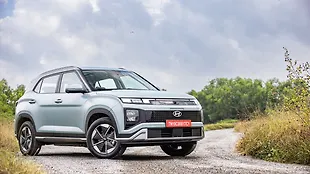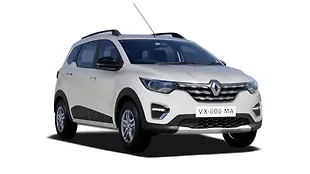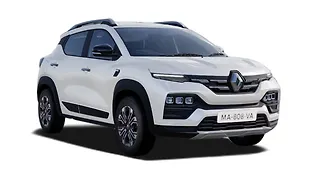Introduction

Renault was one of the pioneers of the MPV body style with its Espace van in 1984. As a product, the Espace maximised space within and popularised the term ‘people carrier’ to the general public. The Renault Triber being what it is should come as no surprise then. It has all the hallmarks of what Renault set out to do with the Espace those many years ago and it could be the ultimate game-changer that the brand needs so desperately. Then there is also the fact that the segment where the Triber exists is saturated with hatchbacks and so a different approach was necessary for Renault to make a mark with this vehicle.
Does it work? Well, we spent some time with the Triber and here is our experience.
How practical is it?

The very purpose of an MPV is to maximise the space available and with Renault offering three-row seating (of sorts) under 4 meters, this space maximisation is finest among its league. Within a length of 3990mm, Renault has managed to squeeze out a wheelbase of 2636mm, which is huge not just in this segment but across a few other class of vehicles which are a notch higher too. But the question is not just about offering space but rather it makes us wonder as to how Renault has managed to maximise the use of these spaces.

There are six unique storage spaces for the front occupants. You get two bottle holders in the door, two glove boxes with doors and two shelves below the air-con dials. Head to the second row and you get more bottle holders in the door as well as a cooled glove box in the centre console. The glove box is narrow in terms of width but has sufficient length to hold a 1.0-litre bottle. Its controls double up as the fan speed regulators for the rear vents.

While being sparse in terms of practicality, the third is well the third row. Having two to three additional seats if you need to take someone along is the difference between going in a group and having to take an additional vehicle.

The boot is one of the major selling points of Triber. Once you take out the third row and fold up the single second-row seat on the left, you get an impressive 625-litres of boot space which when combined with the high roofline makes for a rather versatile bit of moving real estate.
What’s the on the feature list?

Par for the course, these four words should sum up the Triber’s feature list quite well. This top-spec model gets AC with vents for the second and third row, rearview camera, touchscreen infotainment system with Apple CarPlay/Android Auto and four airbags for the front occupants.

However, all versions get dual front airbags, ABS with EBD, rear parking sensors, seat belt reminders and speed alert warning. Two major features that the Triber lacks are the climate control system as well as height adjustment for the driver’s seat.
What’s the fuel efficiency like?

In our real world fuel efficiency tests we got 12.18kmpl in city conditions and 16.51kmpl out on the highway.
How does it perform on the daily commute?

This is where things get interesting. You get a naturally aspirated 1.0-litre three-cylinder petrol engine producing 71bhp/96Nm which makes use of a five-speed manual to send power to the front wheels. On paper, it might seem puny when you look at both its competitors as well as the size of the car, but get moving and you will be surprised by the optimism of this little motor.

There’s some decent grunt low down and in heavy traffic pottering around at city speeds it is quite easy-going. This is despite the notchy gearbox and the full or nothing clutch which tends to make the car leap forward in first gear if you are not careful while releasing it.

In terms of manoeuvrability, the Triber gets a light steering, large turning radius and despite offering so much space inside, it has a small footprint due to its sub-4 metre length. You also get great visibility thanks to the massive glass area all around.
How it is for a weekend with the gang?

Remember how we went on and on about the Triber’s practicality and innovative bits in terms of storage. Well, this is where they come into play. At the heart of things, the Triber is a people carrier and when you go away for a weekend with your friends/family, you are carrying people!

We have already revealed that in the vehicle’s interior, the Triber offers maximum space across most criteria in terms of the rear section. While the front occupants get bucket seats, the rear bench is capable of seating three medium-sized adults though it would be a little closer than one’s comfort levels would permit. The seats themselves are more functional than cushy but that is not an issue as they offer decent levels of comfort. I found the design to be quite funky and one that resembles a resto-mod sofa set.

The thing with trying to squeeze a third row in a space under four-meters is that you can either have a third row or a boot. With both seats up, you get a measly 84-litres, whereas if you remove the third row completely; the boot expands to a galaxy-class like 625-litres. One of the downsides of having a third row in such a tiny space is that you are pretty close to the rear glass if seated in the third row.

After some coaxing, we managed to get the Triber to hit three-digit speeds and that too with six occupants which is simply remarkable considering the size of the engine as well as the size of the occupants. Put simply, the pace of travel is sedated irrespective of the number of the occupants in the car be it on a flat road or an incline.
What’s the deal with the warranty?

Renault is offering the Triber with 2 year/50,000km warranty as standard. However, the company also has attractive service and extended warranty packages that extend the deal to four years and additional 50,000km. The Triber is also included in the R- Secure plan where you can buy a warranty for 5 years and 100,000km.
Conclusion

The Triber is certainly an impressive product in terms of design, innovation and space usage. It is quite good looking too, though this is a common thing with French cars thanks to their funky approach to the game. The only weak link we can see is the puny 1.0-litre three-cylinder engine which is fine for low-speed city driving. However, get out on the highway and sedating the pace of travel quickly becomes a task if you need to cover long distances in short periods. We hope that Renault will bring a larger engine or better output for what is otherwise a pretty good package!
Photos: Kaustubh Gandhi

![रेनो ट्राइबर [2019-2023] इमेज रेनो ट्राइबर [2019-2023] इमेज](https://imgd.aeplcdn.com/272x153/n/cw/ec/39276/triber-exterior-right-front-three-quarter-168617.jpeg?isig=0&q=80)

























